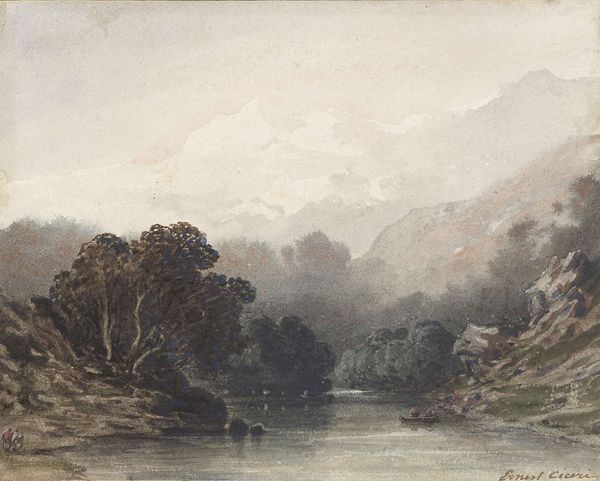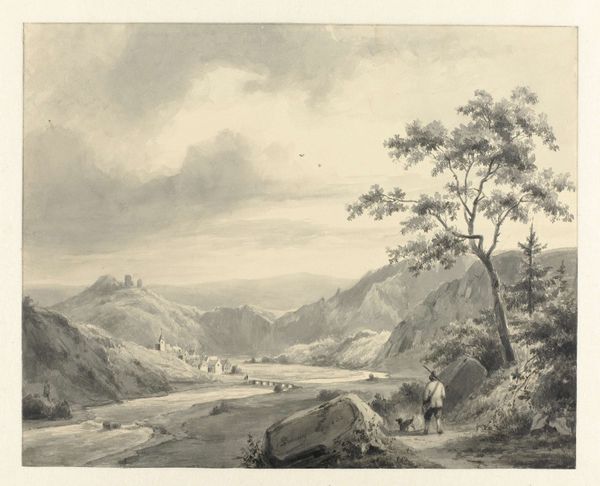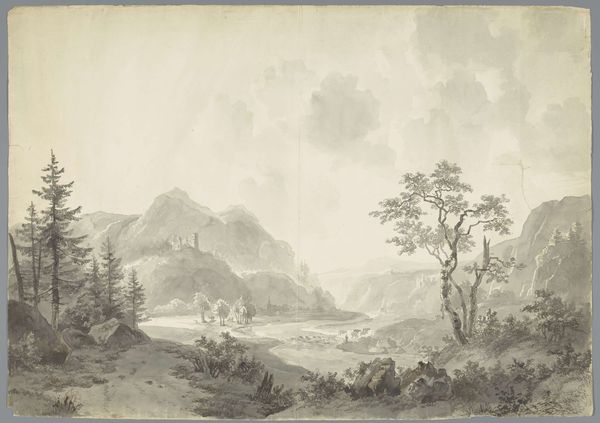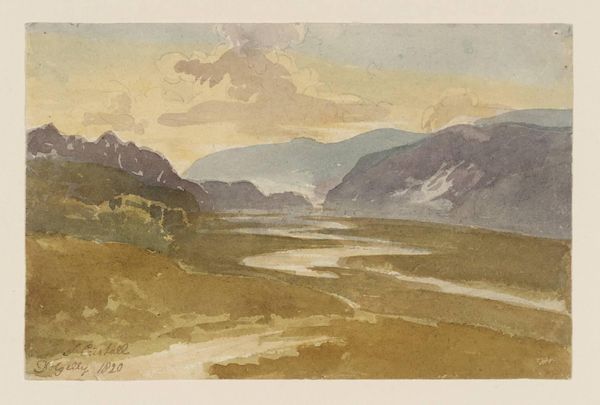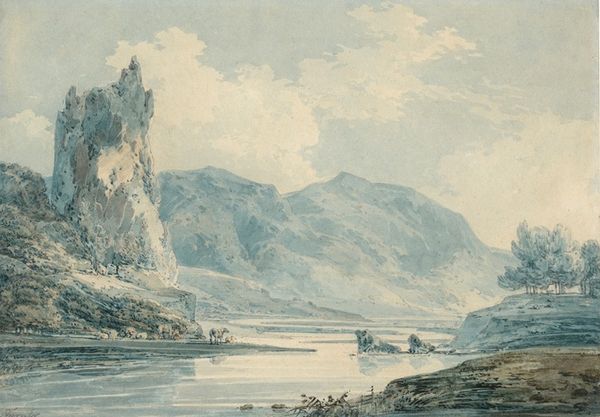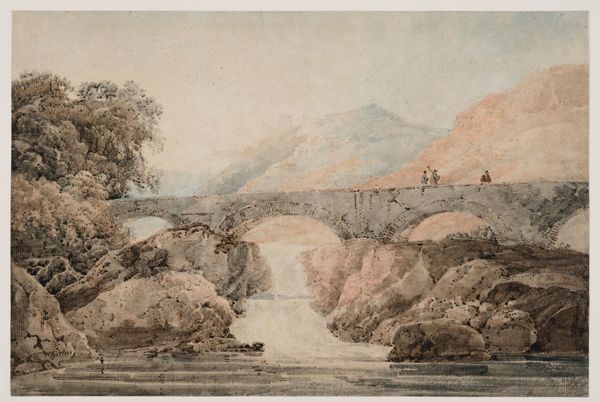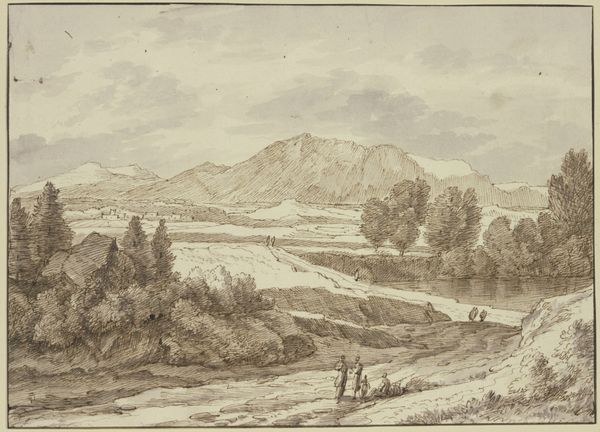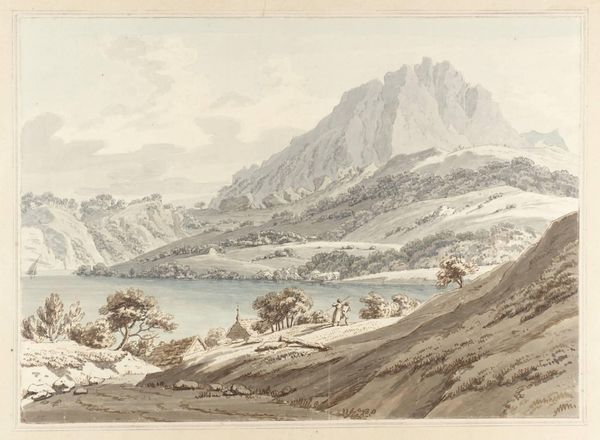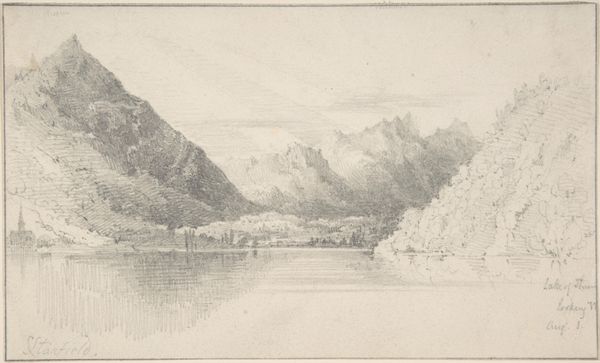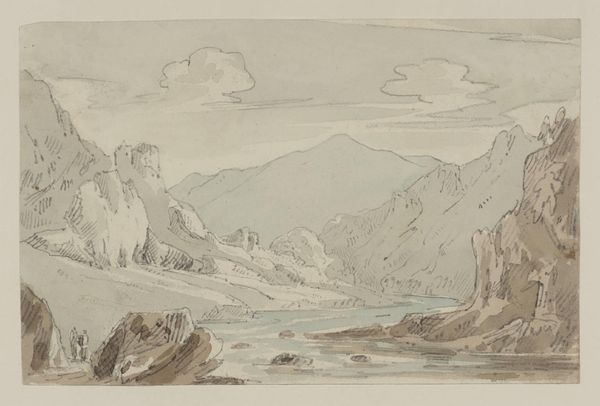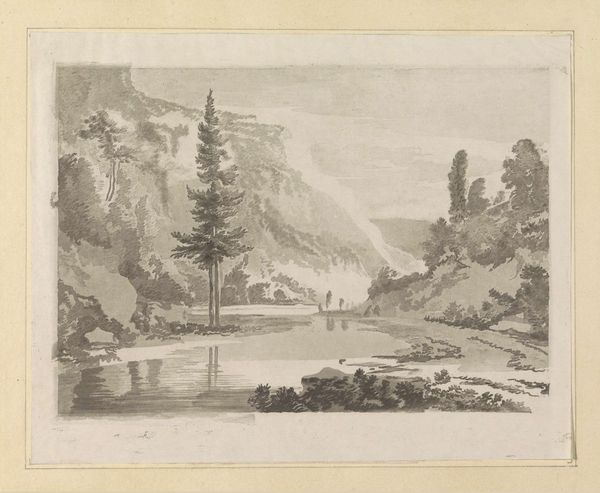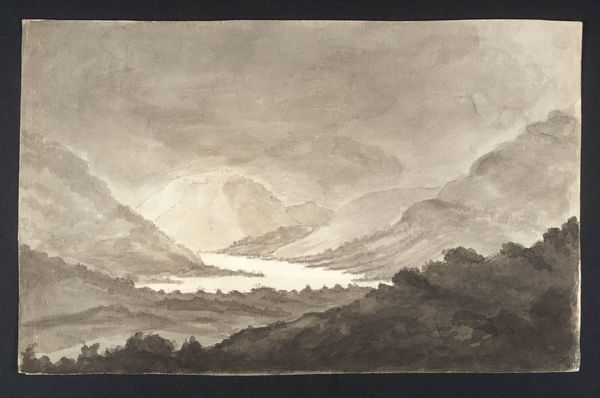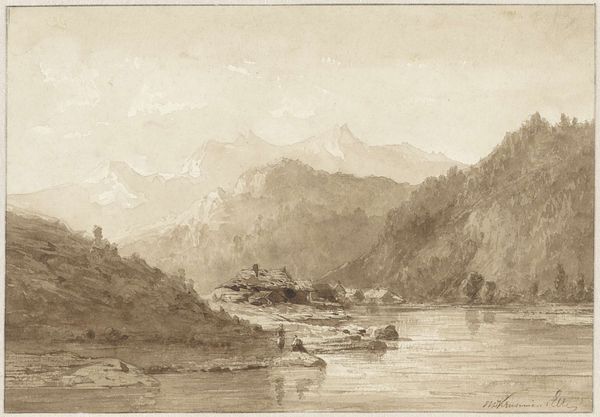
Dimensions: support: 214 x 273 mm
Copyright: CC-BY-NC-ND 4.0 DEED, Photo: Tate
Editor: Here we have William Havell’s "Grange Bridge, Cumberland." It's an interesting wash drawing. I find the landscape quite imposing, yet there's a quiet village nestled within it. What does this artwork say to you? Curator: This work highlights the picturesque movement’s fascination with the sublime, seen through a British lens. Note how the bridge acts as a mediator, connecting humanity with the grandeur of nature. Does the artist’s choice of such muted tones give you any insights? Editor: Perhaps to create a somber mood, a reflection of the industrial revolution perhaps? Curator: Exactly. These landscapes weren't just pretty scenes, they were often statements about the changing relationship between humans and the environment, shaped by specific social anxieties. Editor: That makes me look at it very differently now. Thank you! Curator: You're welcome. Understanding the historical context truly enriches the experience.
Comments
tate 6 months ago
⋮
http://www.tate.org.uk/art/artworks/havell-grange-bridge-cumberland-verso-sketch-t08172
Join the conversation
Join millions of artists and users on Artera today and experience the ultimate creative platform.
tate 6 months ago
⋮
The son of a Reading drawing master, William Havell was the youngest of the sixteen founder members of the Society of Painters in Watercolour, and one of the most talented. Most of his early exhibits at the Society were Welsh views. However, in 1807 he set off for the Lake District to search out new subjects, settling in a cottage in Ambleside for over a year. This study is executed in the unusual combination of coloured washes with gouache (opaque white pigment, or watercolour mixed with opaque white) on a paper of mid-tone. This combination offered a richer range of tones then the more tradtional sketching medium of pencil and white paper, and a greater subtlety in the description of light and shade. Gallery label, September 2004
